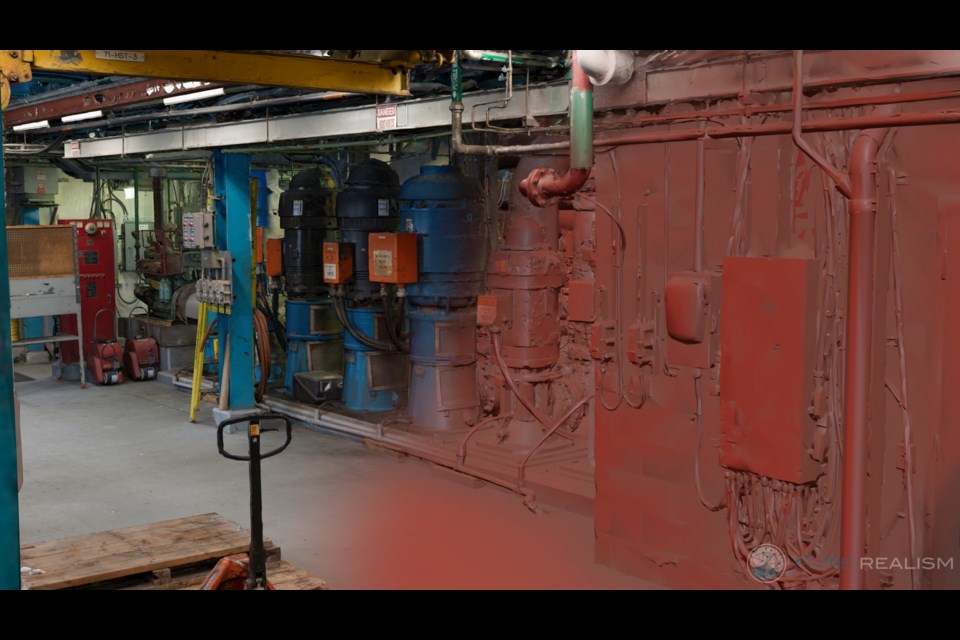Pure Realism, a Sudbury-based designer of virtual reality environments, said demand for its immersive technology has been so high, that it’s looking to double the size of its team in the next three months.
Kris Holland, chief executive officer of Pure Realism, said acceptance of virtual reality [VR] technology signals the beginning of a “paradigm shift” in the business world. “Now that businesses are starting to see what we can do with VR, they say, ‘Oh, well, we want this for everything’,” Holland said.
The team at Pure Realism — currently eight — builds a life-like, virtual reality environment for the user. They visit a site, such as an underground mine, where it scans and renders a virtual replica of the space, right down to the finest detail.
From there, any user can interact with the site, simply using a VR headset, Holland said. It’s such an easy way of interacting with virtual reality, even the most tech-averse person can get some use from it.
“I had my 75-year-old mother walk around one of the environments,” he said. “I've been trying to get her to use a computer for decades, and she had no problem at all.
“The key thing is that the interaction part of this needs to be very intuitive,” he said. “It just has to work with very little instruction, and you can go off and use it.”
The technology rides on a popular gaming platform — Unreal Engine — designed by Epic Games. But despite its origins in the gaming world, don’t expect to see clunky, square forms moving across the screen, Holland said.
Want to read more stories about business in the North? Subscribe to our newsletter.
Pure Realism’s virtual representations can be so life-like that first-time clients have even been known to utter “a string of profanities” at first glance, Holland said.
“At first, they're struggling to deal with what they're seeing, because everybody has a perception of what the world of gaming and computers can do,” he said.“They always expect it to be fake, and feel fake.”
A recent project brought the Pure Realism team together with engineers from mining company Vale to scan their main nickel furnaces, where they scanned six floors in just over 12 hours.
“We were able to take [the client] through his furnace,” Holland said. “Five seconds later, he was in another shop. And then five seconds later, he was in another city. Five seconds after that, he was back in another part of his shop looking at an issue, then at the press of a button, we were able to take the whole building away, and leave just the piece that he was interested in.”
The technology, Holland said, allows users to have meaningful conversations and problem-solve despite the real-world, physical limitations of the space. That’s especially useful for environments, like Vale’s hot furnace rooms, which can be dealt with from the comfort of a boardroom. It can also save the client plenty of money, Holland said.
Imagine not having to pay an expert to fly in from a different country to consult on an issue.
“What we're doing is we're making virtual reality as real as the real world,” Holland said. “So sort of like what people actually want the metaverse to be, that's what we're doing.”
In October, Facebook CEO Mark Zuckerberg made headlines when he announced the company, which includes social media giants Facebook and Instagram, would be morphing into Meta, introducing users to a shared 3D experience, or virtual reality.
“What Meta/Facebook is doing, it tends to be what you would have experienced in the '90s- era computer games,” Holland said. "Very Technicolor, a lot of primary shapes like cylinders and spheres. It doesn't feel real.
“What we're doing is we're making virtual reality as real as the real world. What people actually want the metaverse to be, that's what we're doing," he said.
“The secret sauce in there is being able to make these really complex environments run in virtual."
To get such a sharp VR rendering of a physical space, Holland said he employs 3D animators, game developers, and a crew of hands-on technicians who set up laser scanners and cameras– or “rigs” – in the environment.
The process involves enormous amounts of coding expertise, but also old-fashioned problem-solving on the fly, Holland said. The ability to stand back to assess and attack issues from a different angle is the “secret sauce” he brings to the table.
“Our customers are asking us to scan really weird things in really weird places,” Holland said. “We're always making new camera rigs to be able to do those locations, as well as developing and advancing the current ones we have.”
It’s a constant process, developing prototypes, adjusting, tinkering, and trying new things, he said.
“It's a little bit of duct tape and glue, versus something that eventually will be a much more manufacturable product, easier to use,” Holland said.
But with that constant development comes a great flexibility within his team, Holland said, and a heightened capacity for problem-solving.
“Because all of these different areas constantly having to develop, here we are, a small company in Northern Ontario. And for all intents and purposes, we're going toe to toe with billion dollar multinationals.
“The only way that we can do that is through continuous development.”
